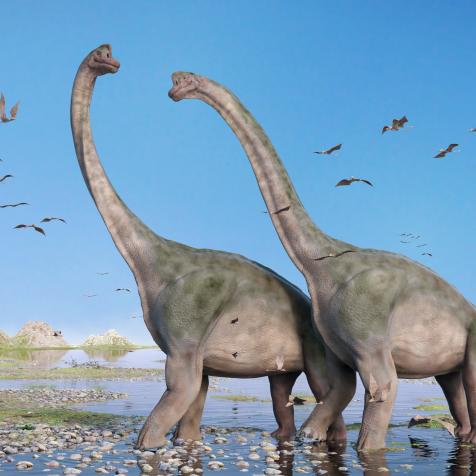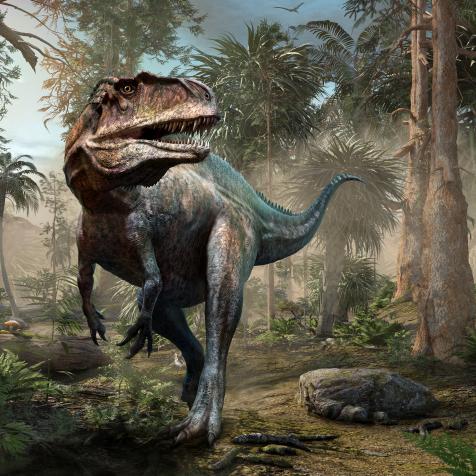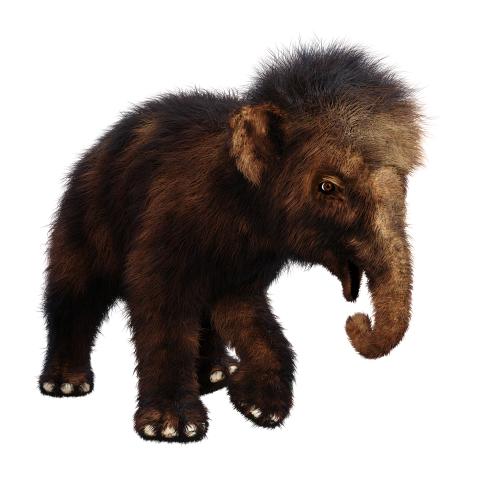
Anton Petrus
Strange Flat-Faced Dinosaur Fossil is Discovered in Egypt
Scientists in Egypt have uncovered an odd-looking dinosaur with smaller teeth, stumpy arms, and a squashed face similar to a bulldog.
Paleontology experts at the Bahariya Oasis in Egypt’s Western Desert have discovered the vertebra bone of this new, not yet named, dinosaur species belonging to the abelisaurid family.
Paleontologists describe this new dinosaur as bipedal, meaning that it walked using only two legs. Other characteristics include small teeth and very short arms. This carnivorous creature is estimated to be around 20 feet long when it was alive, about the size of a school bus. This dinosaur species traveled around the Sahara Desert around 98 million years ago during the Cretaceous period (145 to 66 million years ago). The Cretaceous period was the final period of the age of the dinosaurs. These interesting-looking dinosaurs were a part of the lizard-esque abelisaurid dinosaur family. Similar abelisaurid fossils have been found in Europe and within the Southern Hemisphere but these bones are the first to be found within the Bahariya Formation.
Researcher Belal Salem at the Mansoura University Vertebrate Paleontology Center (MUVP) in Mansoura, Egypt, has helped lead the new study and discovery. Salem expressed how scary living in the Bahariya Oasis would have been during its time saying, “How all these huge predators managed to coexist remains a mystery, though it’s probably related to their having eaten different things, their having adapted to hunt different prey.” Salem’s research team which led the 2016 discovery in an expedition to the Bahariya Oasis, found the oldest known abelisauridae in the northeastern region of Africa. This finding shows that these meat-eating dinosaurs lived across much of the northern part of the continent, in present-day Egypt, Morocco, as well as Niger.
Many of the Bahariya dinosaur fossils that were discovered before World War II were tragically destroyed during a 1944 Allied bombing in Munich. The Bahariya Oasis region is well-known for producing some of the first-known fossils of the most prolific dinosaurs. Due to the tragic destruction of these fossils, many have only existed as pictures in books. The abelisaurids were geographically widespread and highly diverse predatory dinosaurs within the Cretaceous period. The new discovery holds positive implications for the possible biodiversity of Cretaceous dinosaurs in the vast Egypt and larger northern Africa region.












































































